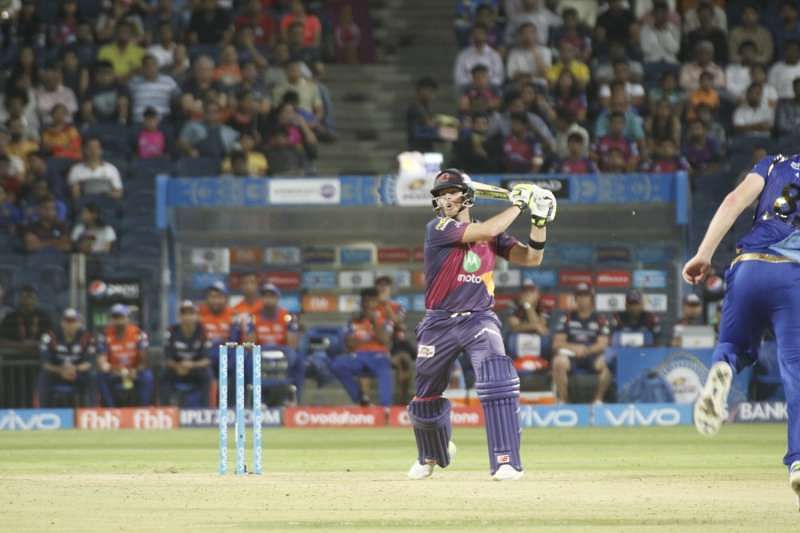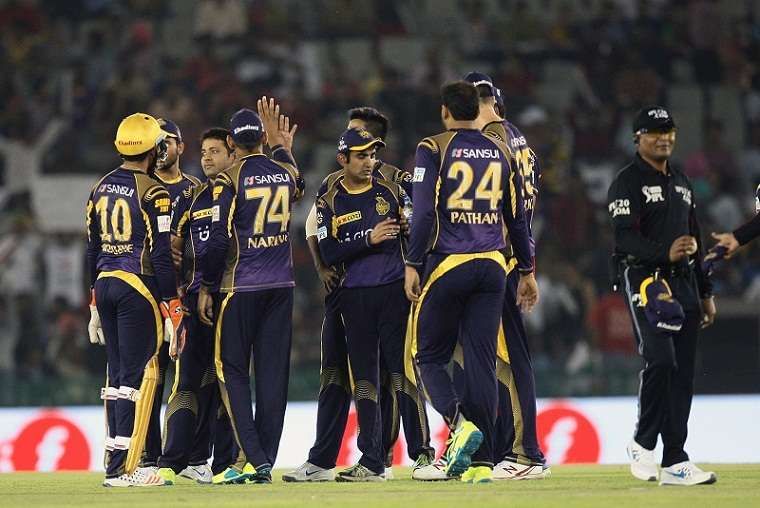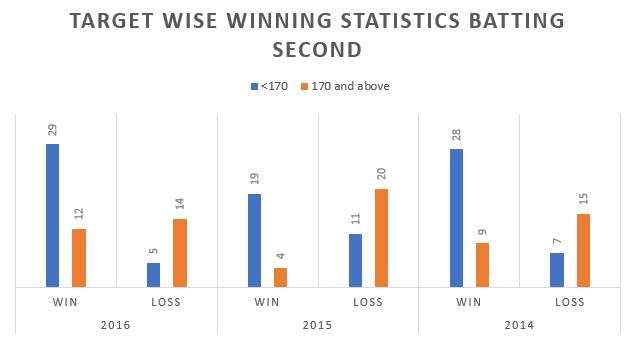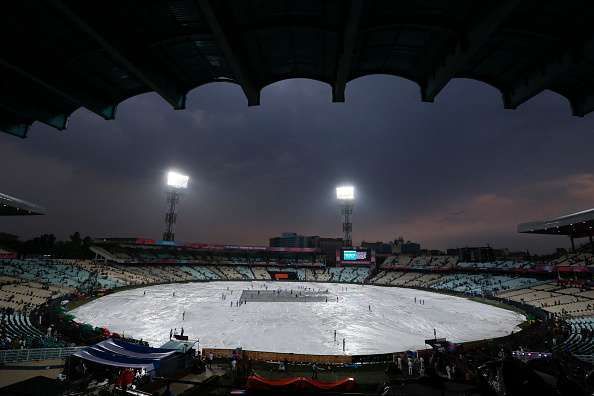
The advantage of batting second in the IPL

The Indian Premier League (IPL) is in its 10th year and one can vouch for the quality of cricket, which has been world-class and exceptional in the IPL all these years. The fact, however, is that T20 is still a relatively new format and, players, teams and fans across the board are still figuring out the fine nuances of the game. One aspect of the game which has recently played a very important role, or at least as perceived by many, is the advantage of the batting second or the toss factor in IPL matches.
We attempt to study the benefits of batting second or the importance of the toss in the IPL, by crunching some numbers and deducing possible explanations as to why the numbers behave the way they do.
How do teams react to the batting second advantage belief in IPL?
No matter what the eventual result of the match is, the numbers quite distinctively suggest that the IPL teams and captains show enormous confidence in the philosophy that their teams are better placed to win matches batting second. The statistics below shows that teams have opted to bat second in approximately 69% of the times after winning the toss across all IPL matches in last 3 years (2014-2016).
M Chinnaswamy stadium is one of the favourite venues for the teams to bat second, last season (IPL 2016) every side that won the toss in the group stage at the Chinnaswamy had opted to bowl. IPL 2017 is still in its early days; the trend, however, is very much the same this season as well. So far, in 7 matches, captains have decided to field first in 6 occasions in this year’s IPL.

How do the IPL matches stack up across the years?
The statistical analysis of the IPL indeed proves that there is a slight advantage in the game for the teams batting second. The historical analysis of all IPL matches in last 3 years throws up the below results:
Toss and win correlation
201620152014Number of matches won batting second402437Total number of matches in the tournament (without the Super Over and No Results)605659Overall win percentage batting second67%43%63%
As seen above, though there is a bit of dissimilarity in the data across years, holistically, the pattern emerging out of this dataset is quite explicit, and it points towards a clear batting second advantage across seasons.
Overall, in 175 IPL matches played over the last 3 years (excluding the matches with no results and Super Over finishes), the win percentage for teams batting second is approximately 58%, with the skewness being extreme in IPL 2016, where as many as two-thirds of all matches were won by the team batting second. Though it is still in the initial days, IPL 2017 too is producing results more in favour of teams batting second (5 wins in 7 matches).
Kolkata Knight Riders lead the pack in chases:
KKR are meaningfully responsible for tilting the distribution of the data (towards the batting second advantage) than any other IPL team. Among all the IPL teams, KKR have the best win percentage batting second than batting first (among teams who have won 20 or more matches in last 3 seasons).
Out of their 26 wins (till IPL 2016) in the last three seasons, they have managed to win 18 times batting second against just 8 while batting first (70% batting second win proportion of all wins). The teams which follow KKR are RCB (59%), MI (54%) and CSK (50%).

The contributing factors to batting second advantage:
With the data presented above, one can understand that batting second gives a team an advantage over batting first. It cannot simply be labelled as a statistical anomaly as the sample size of the dataset is quite large and the distribution of data is more skewed in recent times (a 58% chance of winning a match batting second across matches in last 3 IPLs) than ever in the history of IPL.
Below are some of the interesting aspects of IPL games associated with teams winning matches while chasing. One may also find some attributable reasons for teams doing relatively well when chasing.
Team’s bowling strength than batting skills helps win matches when chasing: One may seemingly contemplate that strong batting units drive teams towards successfully scaling tall totals set by their opponents in first innings. It is, however, a misconception if one is to go by the numbers. Historical analysis shows that teams win more matches while chasing only when the target is an achievable one.
The higher the target, the lesser the chance of winning for teams batting second. For example, teams hunt down a target of less than 170 runs more often than targets above 170. It can hence be concluded that it’s a team’s bowling capability to restrict opponents within modest scores that determine the chasing success over their batting prowess.
This finding serves well to understand the secret behind KKR’s high success rates batting second. KKR’s multipronged, frugal bowling unit studded by Sunil Narine (ER 6.18), Yusuf Pathan (ER 7.34), Shakib Al Hasan (ER 7.10) and Piyush Chawla (ER 7.56) have enabled them to achieve much success in restricting opponents within limits.

The goal setting theory: The goal setting theory becomes imperative in the context of IPL games when there is very little to separate the teams from each other. With similar match-winning capabilities among teams, definite goals help teams batting second to plan and manage their innings better than their counterparts.
Proposed by the leading American psychologist professor Edwin A Locke, the goal setting theory postulates that individuals or teams tend to perform better faced against a set of definite and difficult goals, than easy and general ones.
This theory is substantiated well by the fact that IPL teams tend to lose fewer wickets in the power play overs while batting second than batting first. Teams usually construct their innings carefully by keeping an eye on the target and minimising risky shots while batting second. It’s important to note that, in T-20s, teams get very little time to adapt to the situations or to gauge the prevailing conditions. Most teams, hence, prefer to leverage the experiences they derive from their opponents’ first innings while batting second.
The fact that teams are becoming more competitive and continuously maturing to play this format of the game resonates well while explaining this. As the above statistics suggest, teams have started to absorb scoreboard pressure better, day by day. Teams batting second are surpassing more 170+ targets (46% winning ratio in 2016 against 16% and 38% in 2015 and 2014 respectively) now than the earlier days.
The moisture factor: Dew or moisture factor plays some part in IPL. It is, however, not as considerable as it is in the ODI format where one team becomes the victim of unfavourable bowling and fielding conditions for a prolonged period.
Most IPL games are scheduled in the evenings and last till late in the night, which might at times cause dew to come into play. However, that the matches are scheduled in peak Indian summer, the IPL window time somewhat takes the sting out of potentially game changer dew. Dew in India is more common in winter and late autumn than during the IPL days.
Nevertheless, there are some grounds such as at Mumbai, Mohali and Dharamshala which accumulate meagre to a significant amount of dew in this period. When at play, dew may make it too easy for the batting teams to score freely and briskly.
Dew causes multi-faceted problems to the fielding teams such as difficulties for spinners to grip the ball, problems for the fielders to hold on to catches and more. Though not much, dew, therefore, provides some advantage to teams batting second under lights for the night games.
The Duckworth–Lewis (D/L) method factor: Statistics indicate a clear batting second advantage for IPL matches intervened by D/L method being affected by rain. Teams batting second have won more than 71% of the matches where D/L played a part or targets had to be adjusted by the D/L method. The sample size for such matches is relatively small though. D/L came to the picture in only 7 matches in last 3 years where there were results available.
The run chasing advantage, where D/L comes into play in a T-20 match can be described by a mix of reasons as already explained above. The goal setting theory and the moisture factor are the prime reasons enabling chasing teams to win such rain affected encounters with comfort.

Conclusion:
Needless to mention that, conditions such as the nature of surface, the type of ball, weather, match time of the day may act as differentiators in cricket across all formats including T20s. The outcome of the toss, however, should not impact the game much as it gives undue advantage to one team over the other. The reality, however, is proving to be a little bit different.
In mega-events, such as the IPL, which exhibit such high-octane and fabulous cricket, the advantage-batting-second phenomenon poses some threats to the format and the game, making the otherwise scintillating tournament somewhat predictable, premeditated and partial. With this, the popular saying “Sports is a great leveller” is also in question. It will be interesting to wait and watch if the organisers of the game take steps to eliminate this fractional bias in the coming days.